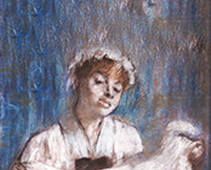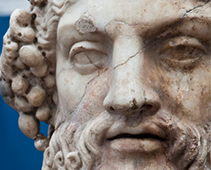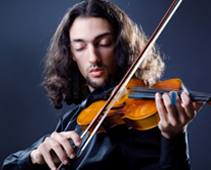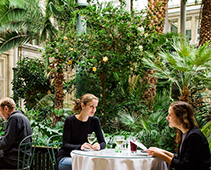The museum’s rich Palmyrene collection – one of the largest outside Syria – consists mainly of funerary busts, acquired by Carl Jacobsen through the Danish consul in Beirut, Julius Løytved, in the decennia around 1900.
PALMYRA
A COMMERCIAL CITY IN THE SYRIAN DESSERT
During the first centuries AD Palmyra was a rich centre for trade between the Orient and the Roman Empire.
Even today Palmyra is situated in a fertile oasis. In ancient times trade with Mesopotamia, present day Iraq, was the most important activity. From that area there were excellent connections to India and the Far East by way of the Silk Road. Trade was in commodities such as precious wood and gems, spices, dye, Chinese silk and Arab incense.
Wealth opened up for a large, well built city with official buildings, temples, trade houses, residential areas and large cemeteries.
The museum’s rich Palmyrene collection – one of the largest outside Syria – consists mainly of funerary busts, acquired by Carl Jacobsen through the Danish consul in Beirut, Julius Løytved, in the decennia around 1900. The grave stones were found in large common graves. The tomb niches were closed with the stone, adorned with an inscribed bust of the deceased.
FUNERARY BUST: MARTI. AD 170-190
The inscription on the well preserved portrait runs:
Marti,
Daughter of Salamallat
Akkaran,
His wife.
Alas!
The text is written in Aramaic – the language mentioned in Genesis, 1 as ‘semitic’. The language was dominant in the Near East (like English today) from c. 1000 BC to AD 300.
FUNERARY BUST: ”THE BEAUTY FROM PALMYRA”, AD 190-210
We do not know the identity of this beautiful woman. The inscription is lost. Neither can we identify her tomb. But we may imagine how her coloured bust with shiny inlays in the eyes must have glowed in the torch light of the underground tomb chamber.
She is the epitome of Palmyra. Her facial features point towards India, the artistic style is close to Rome, the rich jewellery mirror the riches of Palmyra.
FUNERARY BUST: UNKNOWN MAN FROM PALMYRA. AD 150-160
The deceased rendered in the bust is seen proudly showing off his camel in the background. He may have been the owner of a herd of caravan camels, or he may have been one of the few merchants actually travelling with the caravans. His elaborate hair do could signal an Oriental origin. Did he happen to die in Palmyra – far from home?




